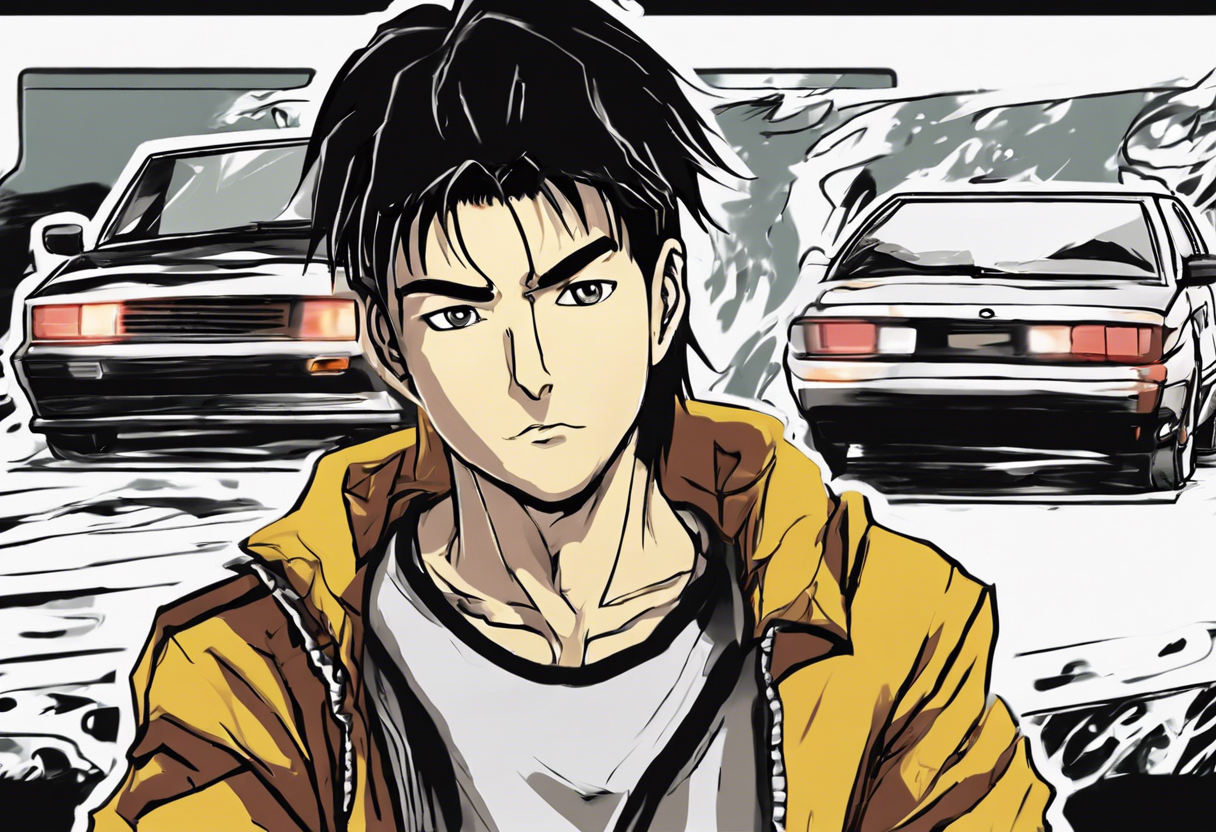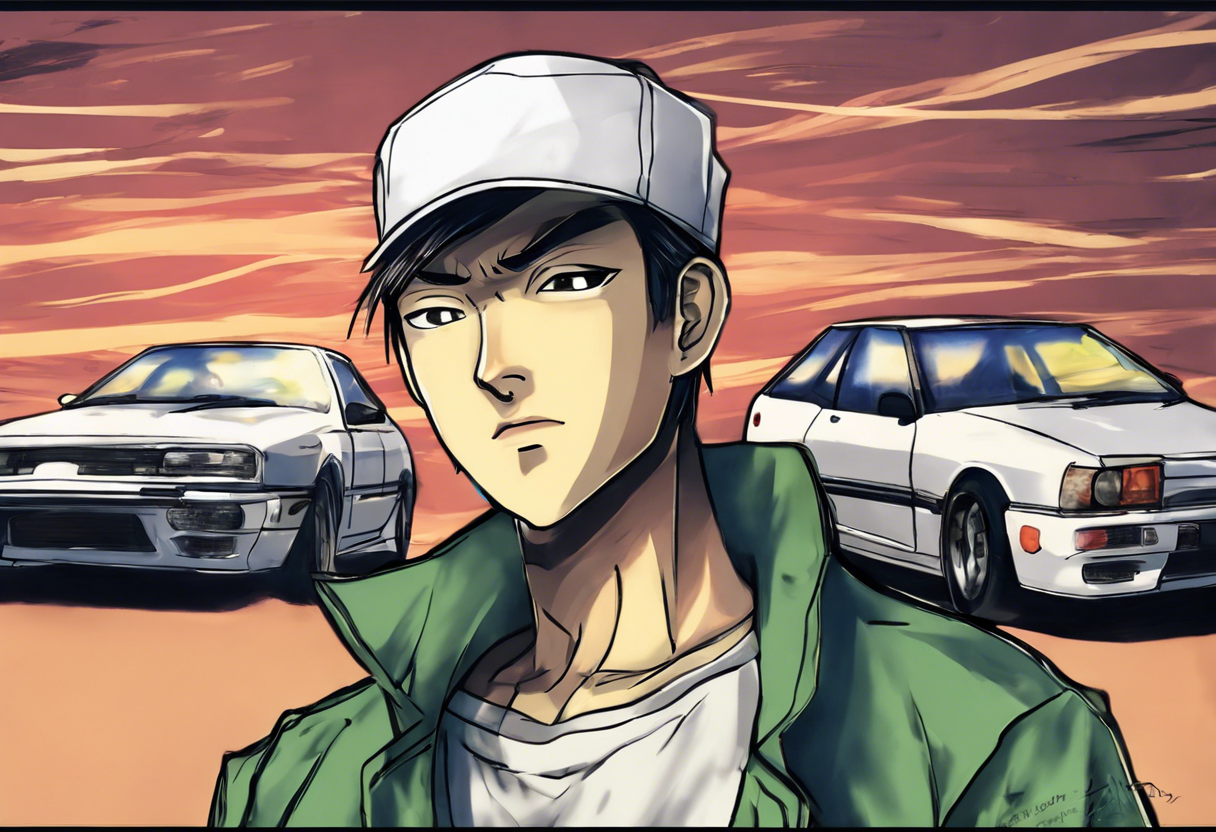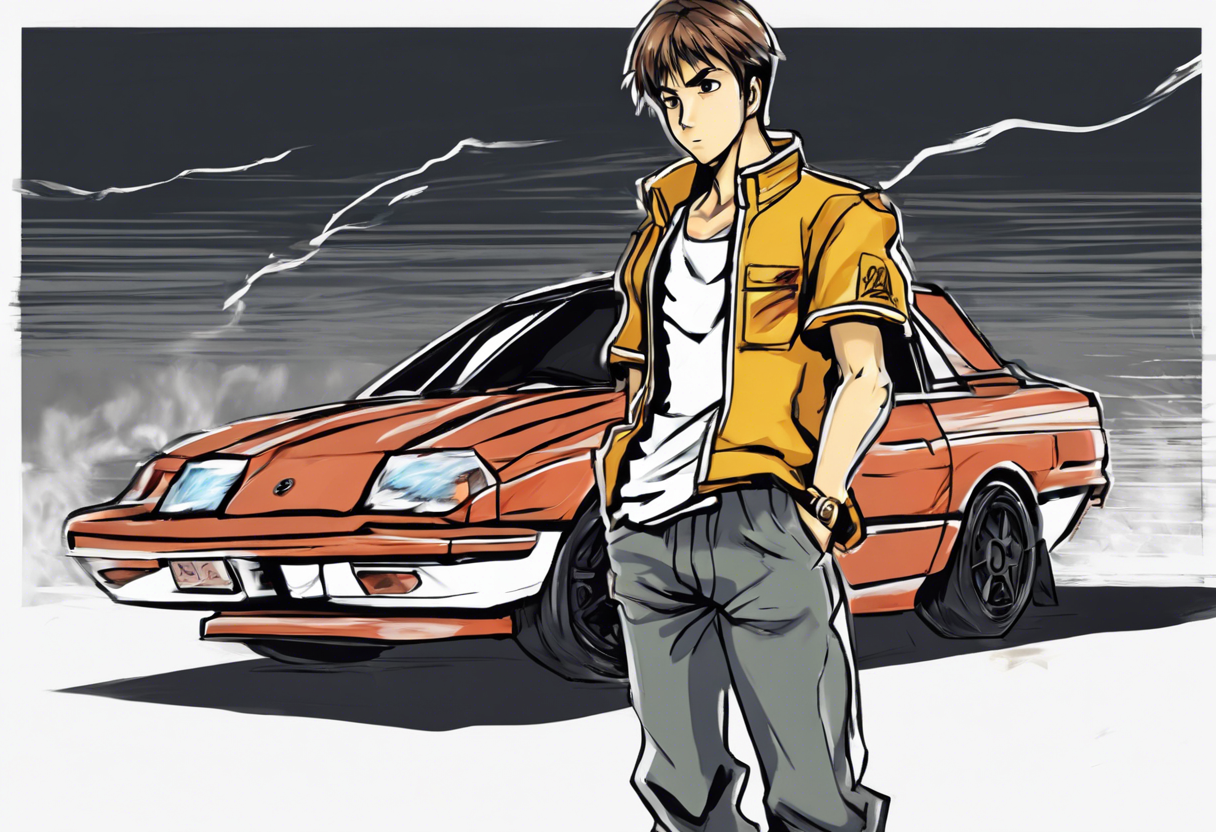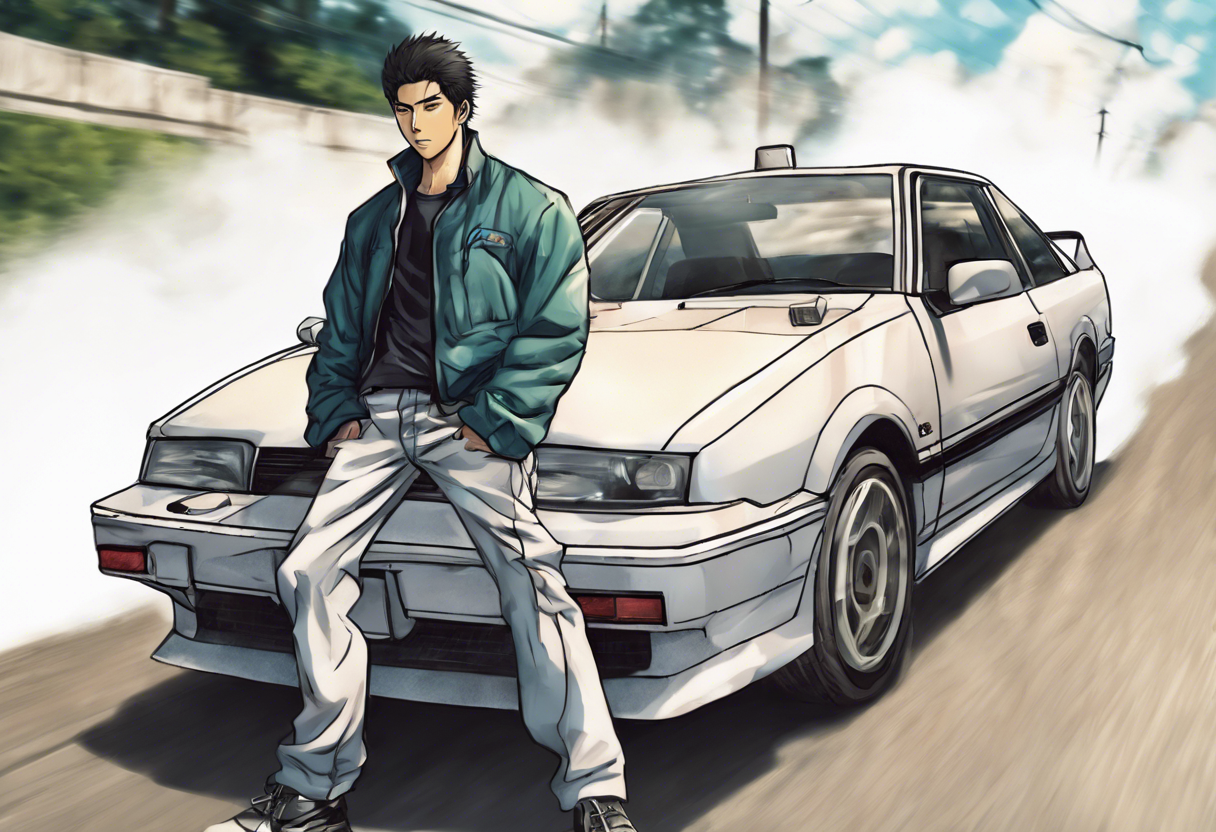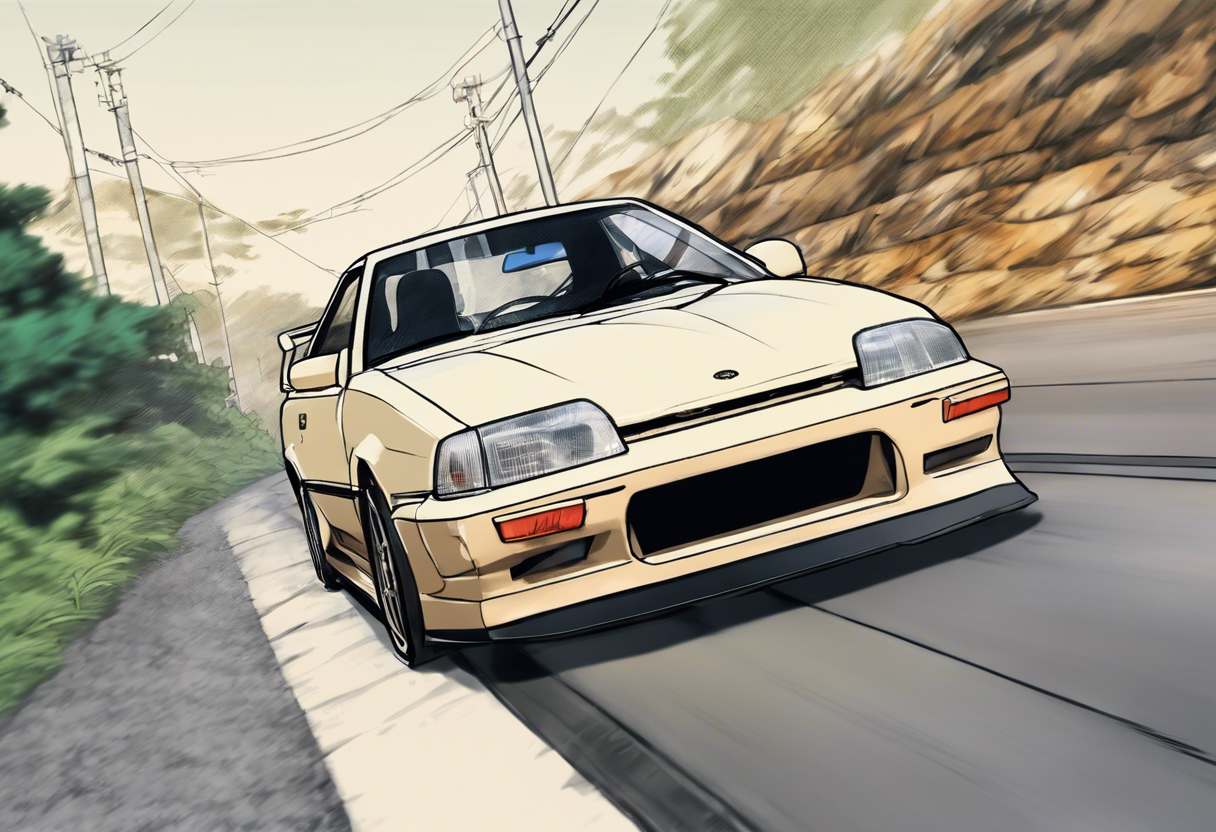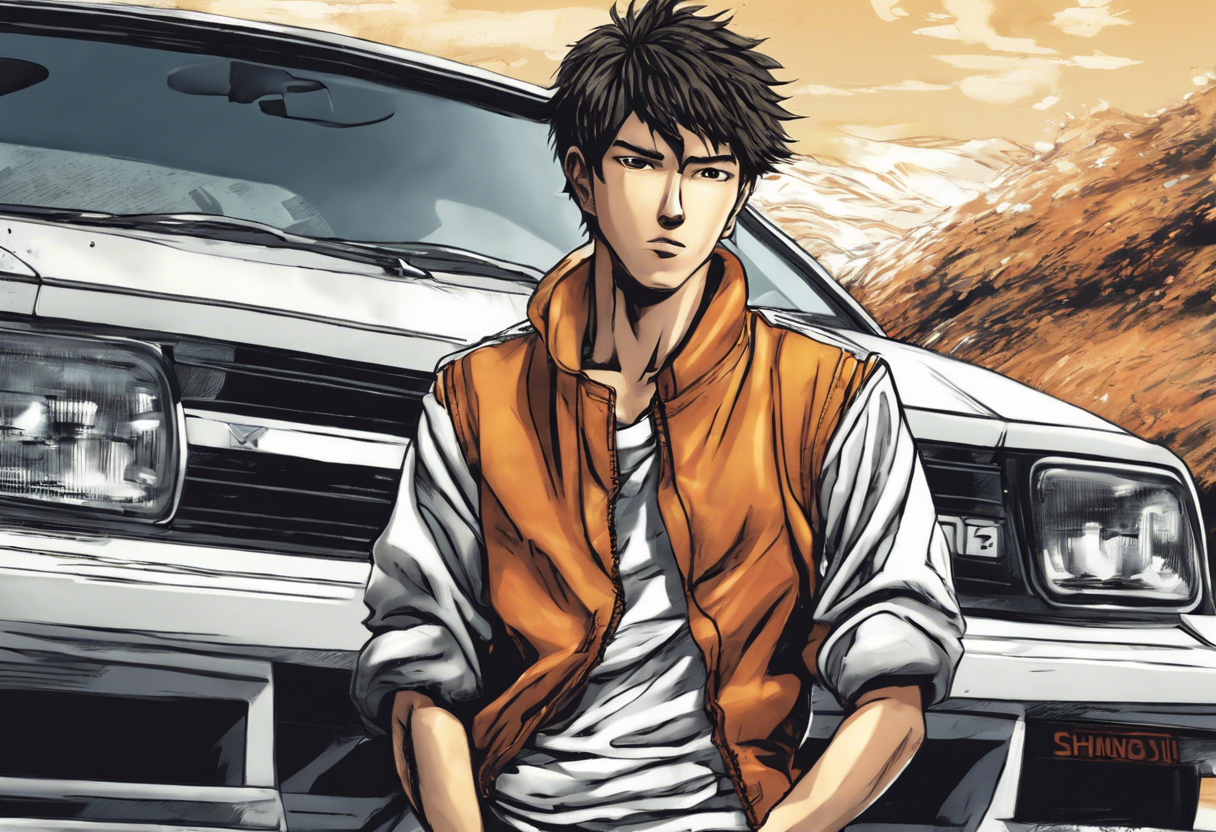Contents
Shingo Shoji: The Aggressive Ace of Initial D
Introduction
Shingo Shoji, a pivotal character in the acclaimed anime series Initial D, is a member of the notorious street racing team known as the Night Kids. Created by Yukinobu Tatsu, the author of the Initial D manga, Shingo is renowned for his aggressive and sometimes reckless driving style, which adds a significant layer of tension and excitement to the narrative.
Shingo drives a red Honda Civic SiR-II (EG-6), a car that reflects his bold and daring personality. His character is deeply intertwined with the themes of ambition, rivalry, and the pursuit of excellence in the high-stakes world of underground street racing. As a childhood friend of Impact Blue’s navigator, Sayuki, Shingo’s connections extend beyond his team, highlighting the complex web of relationships within the series.
Role in the Story
Shingo Shoji’s storyline in Initial D is marked by his intense ambition and competitive spirit. He is the second-best driver on the Night Kids team, a position that fuels his desire to surpass his teammates and become the leader. Shingo’s disdain for Takeshi Nakazato, the current leader of the Night Kids, is a recurring theme, as he believes Nakazato is unfit for the role and openly covets the leadership position himself [1][2].
Shingo’s racing style is characterized by his willingness to take extreme risks, often introducing handicaps such as the "Duct Tape Death Match," where his right hand is taped to the steering wheel, significantly increasing the stakes of the race. This approach not only showcases his driving skills but also his volatile personality, which contrasts sharply with the more calm and composed racers in the series [2].
Throughout the series, Shingo’s interactions with other characters are pivotal. His relationships with Sayuki and other racers often lead to intense rivalries and dramatic confrontations. His aggressive driving style and willingness to push the limits make him a formidable opponent, earning him both respect and fear from his peers.
Character Analysis
Shingo Shoji’s personality is a complex blend of aggression, ambition, and a deep-seated need for validation. His driving style is a reflection of his personality: reckless, daring, and always on the edge. This approach to racing not only makes him a compelling character but also adds a layer of unpredictability to the narrative.
Shingo’s motivations are rooted in his desire for recognition and leadership. He is driven by a strong sense of competition and a belief that he is the best candidate to lead the Night Kids. This ambition, however, is often clouded by his impulsive nature, leading to conflicts both on and off the track.
Despite his flaws, Shingo is a relatable character due to his raw emotion and unbridled passion for racing. His strengths lie in his exceptional driving skills and his ability to adapt to challenging situations, making him a formidable opponent in the world of street racing.
Themes and Symbolism
Shingo Shoji embodies several key themes in Initial D, including the pursuit of excellence, the importance of rivalry, and the psychological aspects of competition. His character symbolizes the extreme lengths to which individuals will go to achieve their goals, often blurring the lines between passion and obsession.
The "Duct Tape Death Match" he introduces is symbolic of the risks and sacrifices racers make to prove their skills. This handicap not only tests their physical abilities but also their mental fortitude, highlighting the psychological depth of the series.
Shingo’s character also explores the theme of leadership and the qualities that define a true leader. His rivalry with Takeshi Nakazato serves as a backdrop to examine what it means to be a leader in a high-pressure environment, adding depth to the narrative.
Cultural Impact
Shingo Shoji has had a significant cultural impact, particularly among fans of the Initial D series. His character has been well-received for his bold and aggressive driving style, which has inspired many fans and contributed to the series’ popularity.
In adaptations and spin-offs, Shingo’s character has been portrayed consistently with his original persona, maintaining his aggressive and competitive edge. This consistency has helped in solidifying his place as one of the most memorable characters in the series.
Shingo’s influence extends beyond the anime itself, with his character archetype inspiring other works in the racing genre. His blend of aggression and skill has become a benchmark for characters in similar narratives, reflecting his enduring impact on popular culture.
Critical Reception
Critics and audiences have perceived Shingo Shoji in various ways over time. His aggressive driving style and volatile personality have garnered both praise and criticism. Some view him as a compelling and dynamic character who adds depth to the series, while others see him as overly reckless and antagonistic.
Despite these varying interpretations, Shingo remains a central figure in the Initial D universe, with his character contributing significantly to the series’ tension and excitement. His complexities make him a subject of ongoing discussion among fans and critics, ensuring his relevance in contemporary discussions about character development and narrative structure.
Legacy
Shingo Shoji’s legacy in the world of anime and street racing is undeniable. His character has left a lasting impression on fans and has influenced the way racing characters are portrayed in media. His enduring appeal lies in his raw emotion, exceptional driving skills, and the unpredictability he brings to the narrative.
As a character archetype, Shingo continues to inspire new works in the racing genre, reflecting his significance in the broader context of anime and manga. His relevance in contemporary discussions about character development and the psychological aspects of competition ensures that he will remain a memorable figure in the world of Initial D and beyond.

